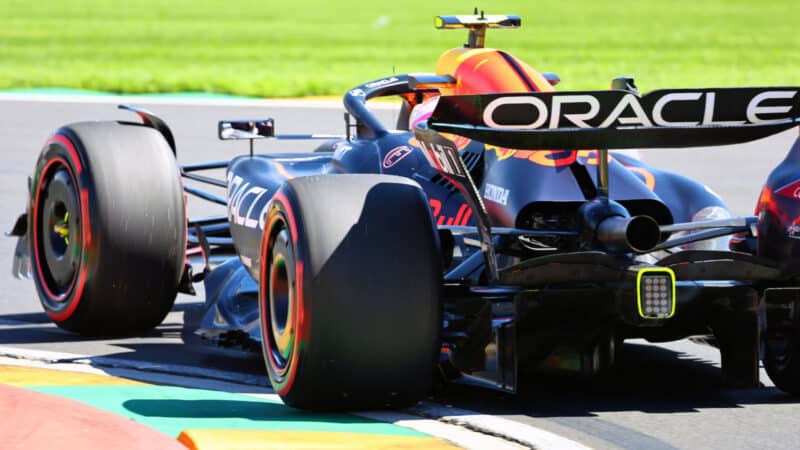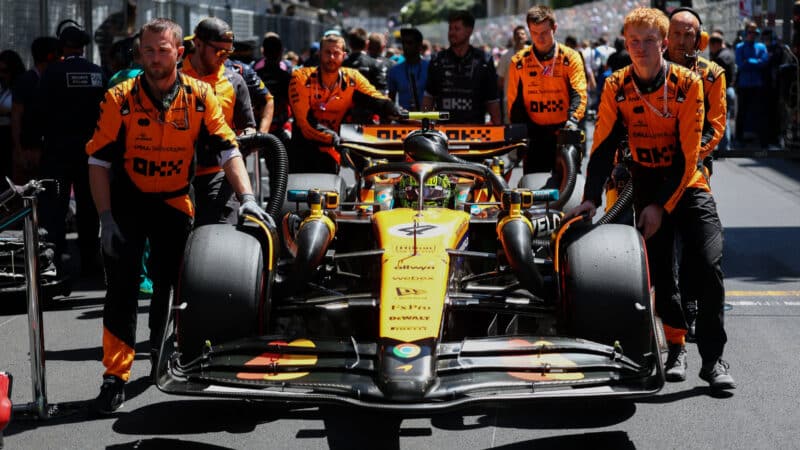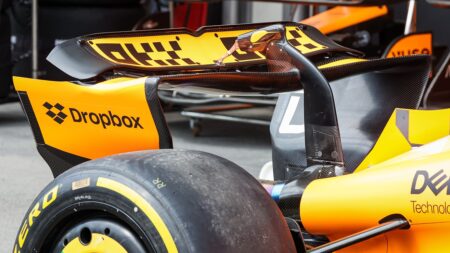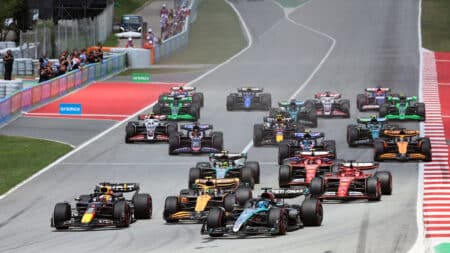To assess the effectiveness of the regulation, cameras were installed on cars during free practice at this year’s Australian Grand Prix.
After reviewing the footage, the FIA determined that even stricter tests were necessary. The tolerance was reduced to 0.75mm at the Chinese Grand Prix, and further tightened to 0.5mm at the subsequent race in Japan.
“The 2025 regulations were designed to counteract the so-called ‘mini-DRS effect’ that became quite a talking point in the autumn of last year. That test was applied from the start of the season, but it soon became apparent it was insufficient,” added Tombazis.
Now in Barcelona, attention has shifted to the front of the car.
How do flexi-wings work?

The FIA has been monitoring wings since Australia
The fundamental principle behind using a more flexible wing on the front or the rear of the car is very simple: to produce less drag on the straights while keeping the same amount of downforce in the corners.
Less drag on the straights translates into higher straight-line speeds, the same as more downforce in the corners.
If a team manages to make a wing flex just enough to flatten under higher load on the straights but return to its position when the car is running slower in the corner, then the advantage is obvious.
What are the new tests?
The FIA process for front wing testing is being tightened in Barcelona. It includes a symmetrical load test, an asymmetrical load test, and a front wing flap point load test.
These were already carried out, but passing them will now be tougher.

Front wing deflection test
FIA – Giorgio Piola
For the symmetrical load test, a vertical load of 1000N (approximately 100kg) is applied simultaneously to both sides of the front wing. Under the new rules, the maximum allowed vertical deflection is now 10mm, reduced from the previous 15mm.
In the asymmetrical load test, the same 1000N load is applied to only one side of the wing, and the maximum permitted vertical deflection is now 15mm, reduced from the previous 20mm.
Finally, in the front wing flap point load test, a 60N (approximately 6kg) point load is applied to the trailing edge of any front wing flap. The maximum allowed deflection is now 3mm, down from 5mm previously.
Why only from the Spanish GP?
While the more strict rear wing tests have been there from the start of the season, the FIA has waited until the ninth round of the season to introduce the technical directive for front wings.
While both the front and rear wings have a big impact on car performance, the front wing is more important for controlling the car’s aerodynamic balance and the effectiveness of all downstream components.
The FIA felt introducing the new rules for the start of the season would have put the teams under too much pressure.

Ferrari expects to benefit from the clampdown
“Over a sequence of races at and following the Belgian Grand Prix we installed cameras on the front wings of all cars and again we concluded that the tests would need to be toughened,” Tombazis explains.
“That conclusion was arrived at quite late in the year, however, and we felt that if we had introduced extra tests at the start of this season, it would have been tough on teams and may have led to existing front wings being scrapped, and extra expense. Therefore, we felt that deferred introduction was more sensible.”
What effect will the new rules have?
While the reduction in the permitted flexibility might seem minor, the resulting increase in rigidity is substantial, something the FIA feels should effectively resolve the issue for the rest of the year.



